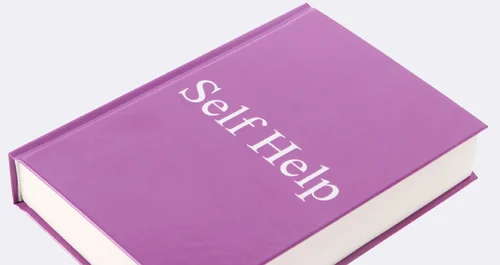Phobias: A Help Guide
What is a Phobia?
While anxiety can be a survival instinct and a useful tool, many individuals suffer with anxiety problems. Phobias are categorized and understood as anxiety disorders. A phobia can be defined by an extreme level of anxiety and fear when faced with a specific object or situation which is out of proportion to the actual threat. The individual may also feel anxious and distressed when thinking about the specific object or situation. Phobias can interfere with everyday life and become almost unmanageable for sufferers. Phobias can lead to impairment in social and vocational functioning.
There are five types of specific phobias (DSM IV TR):
- Animal Type: These include fears of animals such as dogs, cats, spiders, bugs, mice, rats, birds, fish and snakes.
- Natural Environment Type: These include fears of heights, storms, and being near water.
- Blood-Injection-Injury Type: These include fears of seeing blood, receiving a blood test or injection, watching medical procedures on television, and for some individuals, even just talking about medical procedures.
- Situational Type: These include fears of situations such as driving, flying, elevators, and enclosed places.
- Other Type: These include other specific fears, including fears of choking or vomiting after eating certain foods, fears of balloons breaking or other loud sounds, or fears of clowns.
Other phobias which are often categorized separately and as complex include the following.
- Agoraphobia is described as, ‘the fear and avoidance of being alone or in public places from which escape might be difficult or help unavailable in case of sudden incapacitations, e.g., crowds, tunnels, bridges, or public transportation’.
- Social phobia is described as, ‘the fear of being the focus of attention, or fear of behaving in a way that will be embarrassing or humiliating’.
What are the signs of a Phobia?
An individual may experience a few or many of these symptoms when faced with their phobia. Each individual may also experience a different severity in symptoms. Common symptoms and signs of a phobia include the following.
- Palpitations or accelerated heart rate
- Sweating
- Trembling
- Dry mouth
- Difficulty breathing
- Feeling of choking
- Chest pain
- Nausea or abdominal distress
- Hot flushes
- Cold chills
- Numbness or tingling sensations
- Marked avoidance in object or situation
- Feeling dizzy, unsteady, faint, light-headed
- Sense that objects/oneself are distant/unreal
Some symptoms of agoraphobia have been written by the charity Anxiety UK to help people to identify their phobia. These include the following:
- Feeling anxious when going outside, away from your home, standing in long lines, being in a confined space, being at home alone, being in wide open spaces, being in crowded places.
Some symptoms of social phobia have been written by the charity Anxiety UK to help people to identify their phobia. These include the following:
- Worrying a lot about embarrassing yourself in front of others
- Worrying about what people might think of you
- Feeling anxious in social situations
Many individuals who suffer from a phobia also may have another mental health problem. Links have been found with Generalised Anxiety Disorder (GAD), Panic Disorder, substance use, Depression and other phobias.
How common are Phobias?
Estimates vary, yet some suggest approximately 11% of the population have a phobia. Research suggests that the most common phobias in the UK are fears of spiders and heights.
Phobia affects all ages and the age of onset varies. For example animal phobias have been found to typically begin in childhood, whereas some research has suggested that agoraphobia can often begin during the years of the early 20s.
There have also been some differences marked in gender. Some certain phobias such as a fear of spiders and storms seem to be more prevalent among women than men. In contrast a phobia of blood seems to be equally prevalent in men and women.
In addition, there are differences in phobia types across cultures and locations. This suggests that the environment in which we live in has a large impact on the development of phobia.
What are the causes of Phobias?
There can be one or many factors which could cause a phobia.
Learning from our personal experiences can be a main contributor to fear development. For example, the experience of a traumatic event can lead to a phobia. For example, someone who is bitten by a dog will be traumatised by the experience which may develop into a fear of dogs. This can be a coping mechanism that serves a useful purpose, however for many the phobia can interfere with everyday life and be disproportionate to the actual threat. For example, a person who has a phobia of dogs may avoid walking in locations where dogs may be such as parks.
Informational learning of an object or situation can lead to phobia development. By hearing or reading that something is dangerous, people can learn to become afraid of it. An example may be reading that horses can be very dangerous leading to a phobia of horses.
There is also evidence to suggest that many phobias can derive from social observational learning. This means that some individuals may develop a phobia, solely from observing others who show fear when faced with an object or situation. An example may be that a parent can transfer their fear of spiders to a child by showing fear themselves. We learn from others and imitate their behaviours, particularly our parents when at a young age.
There is also evidence to suggest that associative phobias can exist. For example a person is standing at a bus stop and gets bitten by a dog. This experience has been known to develop into a fear of buses. Therefore the individual has associated a traumatic event with something else experienced at the time but unrelated to the trauma.
Many individuals have reported that their phobia has ‘emerged from nowhere’, meaning that there is no known cause. Some research suggests that these individuals may have supressed certain memories into their subconscious mind, therefore not consciously knowing why the phobia has developed.
An interesting point to discuss is that many people are exposed to traumatic events, fear-based information and observation of other people’s phobias, yet do not develop a phobia. This may indicate that a number of prior experiences may also contribute to the phobia. For example a person who has grown up around dogs may be less likely to develop a phobia of dogs after being bitten compared to someone who has never encountered dogs before being bitten.
Another factor that may affect development of a phobia is the response to a traumatic event. For example someone who has been bitten by a dog could chose to either avoid dogs from then on, or they could stroke and pet dogs to build up their resilience to the fear. The person who avoids dogs may be more likely to develop a phobia, having had no further exposure to dogs so not learning that the threat is not as severe.
There is little evidence to suggest that genetics are associated with phobias. However there are suggestions made in terms of other biological factors. When a person is scared, physiological responses are activated, such as the release of adrenalin and cortisol. There are also physical effects such as an increased heart rate. It may be that some individuals have an enhanced physiological experience when faced with a fear, having a more severe experience and memory of the event, therefore more likely to develop a phobia.
Misunderstandings and stigma about Phobias
Everyone can relate to phobias. This is because all individuals experience some symptoms of a phobia when faced with a dangerous or frightening situation. Although there is this connection, many phobia sufferers have illustrated that there are public perceptions that can lead to feelings of loneliness and isolation. Many of the emotions and behaviours associated with a phobia can be seen as irrational and ‘weak minded’, leading to negative perceptions. It is important to acknowledge that this is not the case, and that many people suffer with acute symptoms which can result in unhappiness, avoidance and interference with everyday life.
Fortunately, research suggests that obtaining a diagnosis of a phobia can often be straightforward, compared to that of some other anxiety disorders. This could be as describing symptoms may prove straightforward and that the condition is generally well-known and understood in the clinical work place.
What are the diagnostic criteria for Phobias?
The ICD- 10 (UK diagnostic system) divides phobias into sections; agoraphobia, social phobia and specific phobia (all other phobias). Diagnosis is made according to the number of symptoms present. The phobia is also rated in terms of severity.
The DSM-IV-TR (USA diagnostic system) sets agoraphobia apart from specific phobias (all other phobias). Items such as ‘feelings of anxiety, fear, or panic immediately upon encountering the feared object or situation’ are marked as symptoms used for diagnosis. There has been some speculation as to developments of phobia diagnostics in the DSM V.
What is the risk if Phobias are untreated?
One risk if left untreated is the worsening of symptoms and the development of another mental health problem/s.
Many phobias can be resolved naturally without the need for formal treatment. However, even if this is the case there is a risk of relapse.
Many can suffer with a phobia for a lasting time and those individuals should seek professional help. Living in a world of fear can be lonely, demanding, emotional and tiring if left untreated.
What is the outcome if treated?
There can be high success rates in treatment for phobias. Research, experiments, and clinical practice have led to the development of many evidence based treatments. These can result in a alleviation of phobia and improvement in mental health.
Well-known individuals with Phobias
Scarlett Johansson is said to have a phobia of birds (Ornithophobia )
Madonna is said to have a phobia of storms (Astraphobia)
George Washington was said to have a fear of being buried alive (Taphephobia)
Natalie Wood is said to have a fear of water (Hydrophobia)
Napoleon Bonaparte was said to have a fear of cats (Ailurophobia)
Guidelines for Help: NICE
The National Institute for Health and Clinical Excellence (NICE) provides information related to common mental health problems including anxiety disorders, ‘Good communication between healthcare professionals and patients is essential. It should be supported by evidence-based written information tailored to the patient's needs. Treatment and care, and the information patients are given about it, should be culturally appropriate.’ For further information about NICE see http://www.nice.org.uk/
Recommended interventions for Phobias
Phobias are the only anxiety disorder for which the best approach to treatment is almost always considered as psychology based. There is no evidence to suggest that drug therapies are beneficial in the treatment of phobias. Some anti-anxiety medication can ease symptoms, however they do not alleviate the problem, therefore are not an effective treatment.
Treatment pathways for Phobias
There are many evidence based treatments available.
Exposure therapy/ Desensitisation can be an effective way to cure a phobia. This involves the individual being gradually exposed to the phobia stimuli and building up resilience to the associating anxiety. Initially this may sound like a frightening course of treatment yet it has been proved to work effectively for a large amount of people.
Psychotherapy and counselling has been found to be very useful in overcoming phobias, particularly when the onset was during childhood, adolescence or early adulthood. This approach can focus on getting to the root of the cause, possible triggers and working with the therapist to resolve the phobia by developing coping strategies.
Some psychological approaches can involve cognitive behavioural therapy, which explores your thoughts, feelings and behaviour around the phobia. Practical ways of effectively dealing with the phobia are developed.
Many people may benefit from one or a combination of such approaches.
Resources for combating Phobias
When you feel ready there are many ways in which you can help, support and advice. Firstly it may be worthwhile reading a self-help book. There are many available:
- Overcoming Anxiety - A Self-Help Guide (1997) Helen Kennerley
- Living With Fear. Isaac M. Marks
Some self-help websites include:
http://www.fearfighter.com (Recommended by the department of health and NHS)
http://www.mind.org.uk/mental_health_a-z/8005_understanding_phobias
Some useful telephone numbers include:
- NHS Direct- 0845 4647
- No Panic (Help line for phobia sufferers)- 0800 138 98889
There are now many counselling and therapeutic services and organisations available. There are many trained professionals who will be able to support you such as Counsellors, Psychotherapists, Psychologists and Psychiatrists. Here are details of available services:
The NHS- seeing your GP and asking for a referral to see a specialist.
Charities- (such as MIND, Rethink, Young Minds, Mental health foundation and National self harm network) some may provide support groups, therapy and advice in your local or near-by area. See their websites for further details.
Counselling and psychotherapy clinics and services- Look at online directories or local organisations that offer therapeutic help. (Harley Therapy is one such clinic.
See this article for low-cost and free therapy options.




ASK US A QUESTION

ARE YOU A JOURNALIST WRITING ABOUT THIS TOPIC?
If you are a journalist writing about this subject, do get in touch - we may be able to comment or provide a pull quote from a professional therapist.
References
Becker E, Rinck M, Tu¨rke V, et al. (2007) Epidemiology of specific phobia types: findings from the Dresden Mental Health Study. Eur Psychiatry. 22:69–74.
Bourne, E.J. (1998).Overcoming specific phobia: A hierarchy and exposure-based protocol for the treatment of all specific phobias (therapist protocol). Oakland, CA: New Harbinger Publications.
Bruce, T.J., & Sanderson, W.C. (1998). Specific phobias: Clinical Applications of evidence-based psychotherapy.Northvale, NJ: Jason Aronson.
Choy Y, Fyer A, Goodwin R. (2007) Specific phobia and comorbid depression: a closer look at the National Comorbidity Survey data. Compr Psychiatry. 48:132–136.
Choy Y, Fyer A, Lipsitz J. (2007) Treatment of specific phobia in adults. Clin Psychol Rev. 27:266–286.
Craske, M.G., Antony, M.M., & Barlow, D.H. (1997). Mastery of your specific phobia, therapist guide. Boulder, CO: Graywind Publications.



